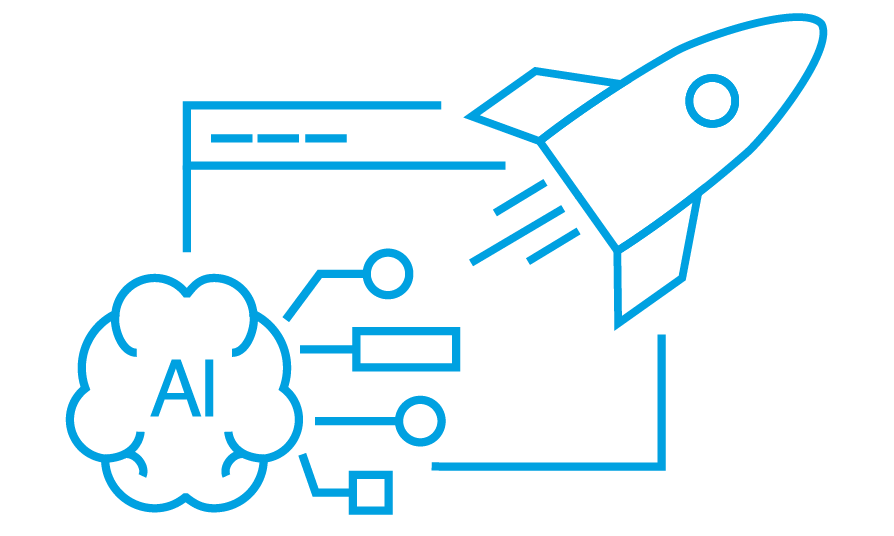Programmatic advertising is one of the most popular methods of advertising. One of the key trends for 2021 is the in-house model of programmatic, which is used by 50% of advertisers in Europe, reports IAB Europe. Everything that happened in programmatic trends 2021 looks promising for the future of the digital advertising industry. According to eMarketer global digital ad spending will reach $571.16 bln in 2022 which is over 65% of total media ad spending worldwide.
We’ve decided to recap the most important events in programmatic this year and discuss them with leading experts from different companies across the world. One of them is Dave Rosner, CMO of Audigent, the agency responsible for the 1st party data platform for advertisers. He shared with us insights about leading programmatic trends that he and his company noticed in 2021.

Dave Rosner, CMO of Audigent
1. What kind of audience segments were used mostly last year? Did you notice any changes in using data in programmatic compared to last year?
In 2021, we saw that segments that spoke to an economic revival were very popular: Autos, eyewear, and shoppers/value shoppers. That was a marked change from 2020, where Pet Lovers, Hard Core Gamers topped the list.
In terms of more macro changes – we saw a large increase in the use of first-party data being applied to the supply side. This is a new approach, and at Audigent we have built it into our multi-pub PMPs to allow optimization within an entirely new part of the inventory supply chain.
2. What programmatic trends did you notice during a pandemic lockdown in 2020?
The pandemic and COVID-19 invaded nearly every aspect of our lives. While it remained the top hard news story throughout the past 18 months, it also trickled into other content areas. Most live sports went off the air for a large part of the year because of COVID. Even home and cooking content often referenced the virus, because it was the reason so many more of us were home and cooking.
This meant that advertisers whose strategy was to avoid the word “COVID” and associated terms were going to miss out on a lot of content. Ultimately, this hurt publishers, who lost out on revenue, simply because advertiser strategies weren’t nuanced enough.
Couple that with the rise in misinformation, and what we ultimately saw was a greater push toward curated media, and the ability to buy with some assurance that you’d land on high-quality content in front of the desired audience.
3. Have you noticed any significant changes in the programmatic trends this year, considering a comeback to pre-pandemic life?
Audiences changed dramatically when the pandemic first hit because people’s lives were changed. They needed to buy things that maybe they’d never bought online before. Suddenly, DTC brands could find new audiences, and companies that were previously leveraging campaigns to drive customers to stores were targeting online shoppers. Something similar has happened in post-pandemic life. People who are returning to the office or sending their kids to school have new needs.
At the same time, brands and consumers are navigating a supply chain challenge, unlike anything we have ever seen. That means that advertisers are adapting their strategies based on what they have in stock.
4. What will the programmatic industry look like next year? What will have the biggest influence on programmatic development?
Google is the biggest influence on programmatic development right now, and it will remain so throughout 2022 and into 2023. While Google has given the cookie a slightly longer lifespan, next year will still be a make or break year for the development of new identifiers and technologies that can replace or reimagine the cookie specifically and identity more generally. Brands will still aggregate data. But 2022 is going to be the year where they need to adopt new, privacy-focused ways of actioning that data so they can continue to thrive in the programmatic ecosystem in a post-cookie world. We will see new solutions emerge that improve the digital supply chain to the benefit of consumers, publishers and advertisers.
Summary of trending topics in 2021

As we all see, COVID-19 had a major impact on programmatic development and online advertising. Pandemic forced advertisers to find a new way to promote their products or services and consumers to switch to online reality. This year and 2020 was a big challenge for the online advertising industry but it turns out that during that time, programmatic has gotten a chance to develop. Another challenge is on its way, this time it’s a post-cookie challenge and preparation for blocking 3rd party cookies by Google.
Trends in programmatic in 2022

2022 for sure will be a continuation of trends that occured this year. The pandemic had a great impact on marketers’ shift to online and mobile ads and in-house advertising. According to Statista, global mobile advertising spending will reach $395.96 bln by 2022.
Industry will also be focused on using new alternatives as a replacement for 3rd party cookies, such as public IDs.
Testing new possibilities to target users will be the topic most talked about (check out our blog post to find out more about other options of programmatic targeting). Advertisers will try to focus more on 1st party cookies as a replacement. Research made by Claravine shows that 72% advertisers consider using first party data for ad targeting.
Look for more trends in programmatic in 2021 in our upcoming blog post, in which we’ll share opinions of other experts from the industry.



